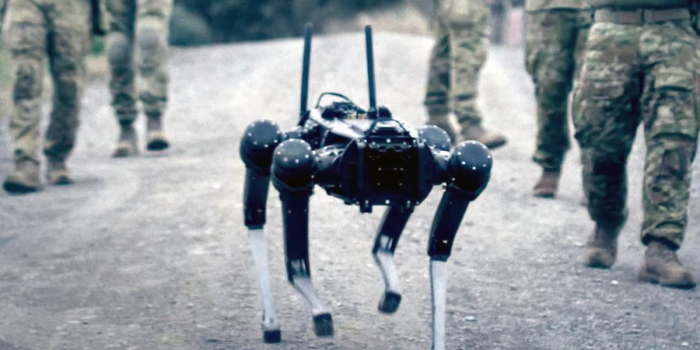Controlling robots with the power of the mind seems like a concept straight out of a science-fiction movie. However, this notion could soon become a reality, thanks to a new study published in the journal ACS Applied Nano Materials.
The study reports the development of “dry” sensors that can record the brain’s electrical activity, paving the way for thought-controlled robots and machines.

The technology was developed by researchers at the University of Technology Sydney (UTS) in collaboration with the Australian Army and the Defence Innovation Hub. The biosensor technology was designed to enable thought control of machines and robots without relying on sticky conductive gels that can irritate the scalp and cause allergic reactions. The technology employs electroencephalography (EEG) techniques to monitor electrical signals from the brain using specialized electrodes.
The researchers produced several 3D-patterned structures coated with graphene, each approximately 10 m thick, to create the “dry” sensors. They found that a hexagonal pattern performed best on the curved and hairy surface of the occipital region located at the base of the head, which contains the brain’s visual cortex. The researchers combined eight of these sensors to create an elastic headband that could be worn comfortably for long periods.

The study tested the technology using an augmented reality headset that displayed visual cues. The sensors could recognize which line was being observed and work with a computer to translate signals into commands that controlled the mobility of a four-legged robot. The researchers believe this study is the first step in creating robust, easily deployable dry sensors to expand the applications of brain-machine interfaces.
The technology developed by UTS researchers has tremendous potential in numerous industries, such as sophisticated manufacturing, aerospace, and healthcare. The technology could allow people with disabilities to control wheelchairs or operate prosthetics, among other possibilities. Although the technology still requires refinement, it represents a significant step towards making thought-controlled machines and robots a reality.

“We are excited about this study’s potential to help people with disabilities as well as further military applications. However, this is just the beginning, and we are optimistic that our technology will lead to an improved quality of life for those who need it,” said Professor Chin-Teng Lin and Professor Francesca Iacopi of the UTS School of Engineering and IT, who led the research.
Source: American Chemical Society


